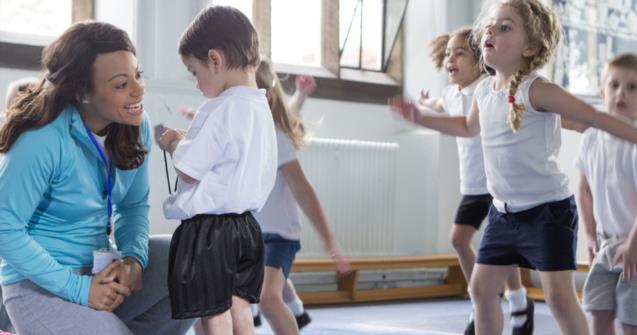
5 ways to help an anxious child
We all know that anxiety can be present at any age, even in very young children. As they grow, most children follow a “normal” developmental trajectory in terms of anxiety manifestations. In simple terms, since anxiety is part of childhood development, we can expect to see children deal with it at different stages. The most common form of anxiety seen in children is separation anxiety. Others will develop signs and symptoms associated with more severe anxiety. As early childhood educators, you may have observed persistent signs associated with anxiety in children. You may even have felt powerless when you faced anxiety-related behaviors. There is no miracle recipe. However, certain strategies can be considered to help children in general, particularly those who may experience more serious symptoms.
A healthy lifestyle at its best
A rested, well-fed child who has a consistent schedule and healthy, balanced lifestyle habits may, over time, demonstrate fewer anxiety-related signs and behaviors. Anxiety tends to increase during times of stress or during periods when a child is more tired. For this reason, be sure to create a stable routine that leaves plenty of time for rest. Alternate between calm and active games and activities. Watch for signs. You may have to temporarily reorganize your schedule to fulfill the needs of your group if children need more rest.
Balance “reassurance” and “overprotectiveness”
When we intervene with an anxious child, reassuring him about his fears is extremely important. The same is true for future events. With an anxious child, you must aim to prepare him for unforeseeable events as much as possible. However, be very careful. Do not become overprotective. Try to find the middle ground between reassuring the child and preventing him from taking initiatives and developing a go-getter attitude. In the same way, make sure you aren’t helping the child avoid all situations that may cause anxiety or increase his level of anxiety. Instead, simply accompany the child whenever he is facing an anxiety-inducing situation.
Foster self-esteem
Self-esteem is built day by day. The more confident a child is, the more he will believe in his ability to succeed. His level of anxiety will most likely go down. Make a point of positively reinforcing an anxious child. Set him up for success and show him you have faith in his abilities…and your own. Keep in mind that children learn by example and you are an important role model.
Plan for what’s coming
Of course, we can’t plan everything. Nonetheless, integrating an illustrated schedule and announcing field trips and special activities ahead of time can help children feel prepared to face what’s coming. All children need to be reassured whenever they face unfamiliar people or activities. Explaining how and when things are going to occur will help an anxious child. Aim to use visual tools as often as possible.
Acceptance
Each child is unique. If an anxious child feels accepted despite his anxiety, it will be much easier for him to grow and evolve. Accompany an anxious child as much as possible.
With your help, an anxious child can tackle the challenges associated with his anxiety.
Maude Dubé, Specialized educator

 Home
Home Theme activities
Theme activities
 Babies and toddlers
Babies and toddlers
 Arts and crafts
Arts and crafts
 Science
Science
 Creative recipes
Creative recipes
 Tips and tricks
Tips and tricks
 Special needs
Special needs
 Extra activities
Extra activities
 Educ-TV
Educ-TV
 Newsletter
Newsletter  Online store
Online store Educatall club
Educatall club

